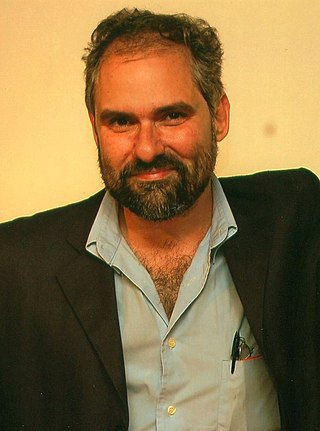
Recife is the state capital of Pernambuco, Brazil, on the northeastern Atlantic coast of South America. It is the largest urban area within both the North and the Northeast Region of Brazil. It is the largest city in Pernambuco state, and the fourth-largest urban area in all of Brazil; the metro population of the city of Recife was 3,726,974 in 2022. Recife was founded in 1537, serving as the main harbor of the Captaincy of Pernambuco—known for its large-scale production of sugar cane. At one point, it was known as Mauritsstad, when it served as the capital city of the 17th century colony of New Holland of Dutch Brazil. Situated at the confluence of the Beberibe and Capibaribe rivers, before they drain into the South Atlantic Ocean, Recife is a major seaport along the Brazilian Atlantic coast. Its name is an allusion to the stone reefs that are present offshore. Together with the urban presence of the Beberibe and Capibaribe rivers and their tributaries, the many additional unique, small islands—and more than 50 bridges linking them throughout the city—create a distinct maritime or "riviera" atmosphere, leading to Recife being known as the "Venice of Brazil".

Olinda is a historic city in Pernambuco, Brazil, in the Northeast Region. It is located on the country's northeastern Atlantic Ocean coast, in the Metropolitan Region of Recife, the state capital. It has a population of 349.976 people, covers 41.681 square kilometres (16.093 sq mi), and has a population density of 9,437 inhabitants per square kilometre (24,440/sq mi). It is noted as one of the best-preserved colonial cities in Brazil and has been inhabited since 1535.

The Pulkovo Astronomical Observatory, officially named the Central Astronomical Observatory of the Russian Academy of Sciences at Pulkovo, is the principal astronomical observatory of the Russian Academy of Sciences. It is located 19 km south of Saint Petersburg on Pulkovo Heights 75 metres (246 ft) above sea level. It is part of the UNESCO World Heritage Site Historic Centre of Saint Petersburg and Related Groups of Monuments. It was formerly known as the Imperial Observatory at Pulkowo.
Malakhov is a Russian family name derived from the Biblical name of Malachi. Alternative spellings include Malakov and Malakoff. The name may refer to:

Francisco Brennand, or Francisco de Paula de Almeida Brennand,, was a Brazilian painter and sculptor, best known for his work in ceramics.

The Armed Forces of the Empire of Brazil were the overall unified military forces of the Empire of Brazil. The Brazilian military was first formed by Emperor Dom Pedro I to defend the new nation against the Portuguese in the Brazilian War of Independence. The Army and Armada were commissioned in 1822 with the objective of defeating and expelling the Portuguese troops from Brazilian soil.

Recife Port is located in Recife Antigo in the city of Recife. This international port serves the RMR and has two main operational areas: cruises and cargo. It is located on the eastern island of Recife antigo on the banks of rivers Capibaribe and Beberibe. Differentiates itself from another ports located in the city center the fact that the port does not have any interferences with the center. Its administered by the Government of the state of Pernambuco and is historically deeply linked with the arrive of the first settlers in Recife (1537).

Bartolomeu de Gusmão Airport was a Brazilian airport built to handle the operations with the rigid airships Graf Zeppelin and Hindenburg. The airport was named after Bartolomeu Lourenço de Gusmão (1685–1724), a Portuguese priest born in Brazil who did research about transportation with balloons.

Duília de Mello is a Brazilian astronomer. She is currently full professor in physics at the Catholic University of America and collaborates with NASA Goddard Space Flight Center.

Carlos Julião was a Luso-Italian artist and engineer of the Portuguese colonial army, working as a fortress inspector during the second half of the 18th century and beginning of the 19th century. He is more known for his watercolor drawings, portraying the different racial and social types inhabiting the Portuguese empire, as well as the period and methods of mining in Brazil.

The National Observatory is an institution localized in Rio de Janeiro, Brazil. Founded by Pedro I on October 15, 1827, it is one of the oldest scientific institutions in the country. Its initial purpose was to guide the geographic studies of Brazil and teaching navigation.
The following is a timeline of the history of the city of Recife, Pernambuco, Brazil.

Lisbon is one of the most popular city destinations in Europe. The city of Lisbon and the Lisbon metropolitan area attracts a significant number of tourists each year, drawn to its historical and cultural heritage, good transportation connections and good touristic infrastructure.

The Imperial Brazilian Navy was the navy created at the time of the independence of the Empire of Brazil from the United Kingdom of Portugal, Brazil and the Algarves. It existed between 1822 and 1889 during the vacancy of the constitutional monarchy.

Alexei Bueno is a leading contemporary Brazilian poet. As curator, he organized more than eighty exhibitions on fine arts or on the history of literature. As editor, he published many selected or complete works of great classics of the Portuguese language, such as Camões, Fernando Pessoa, Mário de Sá-Carneiro, Almada Negreiros, Gonçalves Dias, Álvares de Azevedo, Machado de Assis, Cruz e Sousa, Olavo Bilac, Alphonsus de Guimaraens, Augusto dos Anjos and Vinicius de Moraes.

Solano Trindade was a Brazilian poet, actor, folklorist, painter, stage director and activist. Trindade was active in the Brazilian Black Movement, having founded or co-founded several popular theater and art initiatives, such as the Teatro Popular Brasileiro company.

The Zeppelin Tower is located in the neighborhood of Jiquiá, formerly Campo do Jiquiá, in the city of Recife, state of Pernambuco, Brazil. It was the first aeronautical station for airships in South America, and is the only object of its kind still standing in the world.

The Palácio de Friburgo also known as the Palácio das Torres, was an official residence built by Count John Maurice of Nassau-Siegen between 1640 and 1642 in what was then Mauritsstad, the capital of the Dutch colony of Nova Holanda - now the city of Recife, capital of the Brazilian state of Pernambuco. It existed until the second half of the 18th century, when it was demolished due to the damage caused during the Pernambuco Insurrection.


















